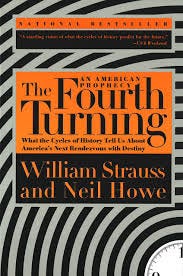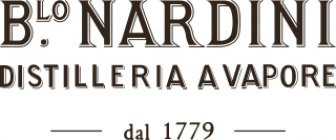Weekly Distillation No.16
WFH, Efficiency, Vaccines, Russia, Empty Offices, Inflation Targeting, Gas Pipelines, Political Interference, Linearism, Management and Amaro

Photo by Julian O'hayon on Unsplash
This newsletter is written for entrepreneurial organisational leaders and aims to help identify themes of our current context and provide questions, tips and tools that can help in navigating these times.
“History is seasonal, and winter is coming” - William Strauss
“This is a pandemic. I felt it was a pandemic long before it was called a pandemic.” - US President Donald Trump
“All of us, wherever we live, have to be more careful than ever about sticking to all of the rules and guidance and trying to minimise the chances we're giving the virus to spread.” - Nicola Sturgeon, First Minister of Scotland
“The worst case scenario is simply intolerable. It would represent the greatest loss of New Zealander’s lives in our country’s history. I will not take that chance. The government will do all it can to protect you. None of us can do this alone.” - Jacinda Ardern, Prime Minister of New Zealand
“I was informed by Chancellor Merkel that Russian opposition leader Navalny was attacked with a nerve agent, in his own country. This is a despicable and cowardly act - once again. Perpetrators need to be brought to justice.” Ursula von der Leyen, President of the EU Commission
“From the point of creativity, if you have to keep thinking which words you can use and which you can't, then that will stifle creativity. The main thing is to realise that words depend on their context. Very literal-minded people think a word is a word but it isn't.” - John Cleese
Skim it in a minute
Thematic insights from the news and the web to help you think about potential future and current contexts and how to be productive, creative and successful in your work now
Coronavirus

Photo by Morning Brew on Unsplash
We appear to be holding our own on the pandemic, or at least in the west. Case numbers are not rising rapidly - for every Spain, Portugal, France, Florida or Arizona there’s a Germany and a New Zealand. If we can continue this pattern, then every week is getting us closer to the vaccines that will make the “return to normal” a reality. The window for that vaccine to be available appears to be Nov 2020 earliest through to Winter 2021, if a successful and safe vaccine can be developed and then manufactured in scale.
Distribution of COVID-19 cases worldwide, as of 3 September 2020

Good Judgement’s Superforecasters have an interesting chart on when they see the vaccine coming in the US (scroll down in the link to get to the relevant chart) - in the last few weeks there has been a material shift of people believing this will come between October 20 and March 2021.
The initial vaccines will be largely sent to the West in initial months, with the US having signed up for 1.8 billion doses and so far, and the UK 340m doses. One obvious debate coming down the road is 1) is this vaccine effective and safe for me and my family and 2) what freedom (my rights) do I have as an individual to accept or reject a vaccine versus my duty to society (my obligation as a member of a community) to participate. Here’s a quick recap on how vaccines are tested and approved in the UK (a different process from the US I believe), the NHS advice and the view of the WHO. Despite the strong consensus across Europe on this, you can anticipate growing debate and opposition. Have you ever listened to both sides of the argument? Or are there some arguments that are simply too far out there to be countenanced?
Will you and can you require your team to be vaccinated before they return to an office? Unlikely. So what’s your approach to vaccines as an organisation?
The future of work

Photo by Andrew Neel on Unsplash
Will WFH home lead to the end of the manager? Ultimately your productivity to an employer (the main metric by which most bosses will measure you on) comes down to:
Are you available
Are you competent
Are you able to deliver, and deliver more than you cost
Will you deliver more than I and/or the client has asked for
Do you demand less of my time than others
(As an aside, you will notice that these are all questions that can be asked of an old-fashioned machine and/or an artificial intelligence system)
These questions all carry into the WFH environment, but the people who will create a stronger position in the organisation of the future are those who are self-driven, not needing a lot of management (see bullet 5). There are secondary (which arguably should be primary, but are not in most places) factors of do you live out our values, do you communicate and share your knowledge, do you contribute across the team when it doesn’t always serve your best interests, do you have a positive attitude, do people like you.
These five bullets raise five interesting questions for all of us:
I can now be available 24*7, so where will I put the boundaries, as any employer is likely to be happy with 24*7 availability
How can I develop my self, to grow my competency with new skills, deeper skills, or apply my skills in new contexts
What are the essential goals and tasks to focus on, and what is secondary? How will I ensure the removal of distractions (which have increased immensely with WFH)
What does it look like to deliver more than asked for (Cap Gemini used to have an acronym OTACE - On Time and Above Customer Expectations) but do it in a sustainable way? What does it look like to celebrate success when you work from home and never see your colleagues or teams?
How much time should I spend communicating with my manager and what does it look like to build a strong relationship, with regular communication but not too frequent or demanding? Perhaps we’ll all be using wearable technology and then our bosses can give us a pat on the back we actually feel.
I’ve been trialling a couple of simple new tools to be more focused and efficient. One is an A3 sheet of paper I update once a week, often on a Saturday. The top row is the different areas of work I do plus “others” plus “self”. The left hand column is split into four: Key (for the most important jobs that help drive you towards your goals"), Secondary (for the other things you need to do), Delegate (for anything you can pass on, or shouldn’t be doing yourself) and Backburner (for anything that needs to be on the to-do list but isn’t going to get done in the next week. Each day I then take an A4 sheet and split it into quadrants - Deep Work 1, Deep Work 2, Shallow Work (with a list for emails to send, calls to make and other items tat are neither calls nor emails) and then Evening (to give focus to the evening). I’ve used these two simple tools for weeks and I’ve become more focused on key tasks, better at delegating, less stressed and I enjoy my evenings more as there is a better intentionality to them.
I’m enjoying Ryan Holmes’ newsletter (ex CEO of Hootsuite). This week he wrote about what happens if work-from-home lasts forever. I spoke to one CEO this week who told me about a global professional services firm he knew well who are planning, over the next five years, to reduce their office space by 30%. More than two-thirds of large company CEOs plan to downsize their office spaces, according to a KPMG survey. Hot-desking and <1.0 desks per person was a trend already, but I talk to a lot of executives and I don’t hear a great appetite to get back to an office, other than for socialising or strategising - both of which you could do in a hotel lobby. Zoom is blowing the lights out with its growth and I’m looking forward to 1) the competition (on a marginal basis I am doing more Microsoft Team calls than I was a few months ago, so Zoom is losing market share in my house) and 2) how it reinvests to create a better product. And this article in arstechnica is a good overview of what each CEO needs to be thinking about in regards to work from home.
Inflation bubble

Photo by Aleesha Wood on Unsplash
One slightly under talked about event this week, which fits the theme of rising asset inflation, was what the US Federal Reserve decided in Jackson Hole regarding inflation targeting. There were a few changes to how it approaches policy and in summary, it will now target an average inflation across a period rather than at any particular moment during that period. In exchange, it will heavily focus on pushing for full employment, or until the jobs market is like it was at the start of this year - i.e. very tight.
There are less and less levers to pull in monetary policy these days, and the rise of quantitative easing has led to massive asset inflation, even whilst consumer inflation has remained suppressed (arguably thanks to China and automation rather than the Fed). If other central banks follow this path, then targeting of interest rates on consumer prices may become much less important (which surely leads on the margins to higher CPI whilst still keeping interest rates low) and economic reflating will be the number one priority.
Helpfully, rising inflation and the devaluation of fiat currency also reduces the debt burden of the west. With the UK now at over $2 trillion of debt (Apple shareholders could sell out and pay off our national debt), this is a significant challenge.
For savers, the challenge remains of where to find return and yield. Interest rates are at low levels, other assets and some stockmarkets are at highs so do we continue to pursue higher risk assets to gain the returns we desire? We continue to have a situation where the underlying economy is weak, consumer spending that drives Western GDP is in a fragile recovery, and yet the combination of QE, rising certainty over coronavirus implications and the expectation of no significant increases in interest rates is leading to cash piling into assets. A house of cards? Or a justifiable new bull market?
As a leader, how can you leverage (pun intended) low interest rates but also protect yourself against the rising levels of risk in the financial system?
Rising geopolitical tensions

Photo by roman pentin on Unsplash
One of the books I am reading is “Collapse: How Societies Choose to Fail or Survive” by Jared Diamond. This book has been on my shelf for years but a pandemic seemed a great time to start it. One thesis Diamond has is that societies fail when their neighbours fail to trade with them. Europe as a whole, and the UK also, continues to be reliant on Russia to provide natural gas and there have been multiple situations whereby Russia has used its leverage by shutting off gas during the winter months. This week there were another couple of reminders why Russia is not a good neighbour currently. The confirmed poisoning of Navalny (met by claims of “fake news” by Russia unsurprisingly) and also the confirmation of another attempt to create false media through Facebook both hit the headlines.
We can expect retaliation from the UK, US, EU and other global organisations. Gas pipelines become key and will Germany cancel Nordstrom 2 which is due to open in early 2021 and will increase the flow of gas from Russia to Germany (thus disappointing the US which wants to ship LNG), or will Germany grumble about how awful this is and then embrace Russia even closer? Putin’s playbook remains to 1) divide those who are a threat to him (UK, US, EU) and 2) to embrace in a bear grip those who get close to him so they can’t escape.
This is a time of low levels of open conflict for the West and the rising geopolitical tensions remain a growing threat for the environment for all leaders into 2021 and beyond.
A long read for the weekend

It’s rare that I read a book these days that keeps me awake at night but I’ve found myself lying in bed this week in the middle of the night thinking on the consequences I had just read. I have 17 books on the go currently (I know, sorry) but “The Fourth Turning: What the Cycles of History Tell Us about America's Next Rendezvous with Destiny” has driven a lot of pondering. If you can get past the fact that Steve Bannon is a fan, this is a book that provokes, terrifies and inspires at the same time.
The core of the book is built around the argument that we have become a society that obsesses over linearism (tomorrow has to be better than today, the past is irrelevant as a guide to the future) instead of remembering the critical role of the cycle in life. Whether that is birth to death, planets rotating, plant cycles, forest fires, economic cycles, fashion cycles, peace and war - the cycle is everywhere. And history shows that there is clear trends across four generations. We’re now in the fourth generation - which is usually when the most traumatic change happens. Here’s what the authors wrote in 1997:
The next Fourth Turning is due to begin shortly after the new millennium, midway through the Oh-Oh decade. Around the year 2005, a sudden spark will catalyze a Crisis mood. Remnants of the old social order will disintegrate. Political and economic trust will implode. Real hardship will beset the land, with severe distress that could involve questions of class, race, nation, and empire. . .The very survival of the nation will feel at stake. Sometime before the year 2025, America will pass through a great gate in history, commensurate with the American Revolution, Civil War, and twin emergencies of the Great Depression and World War II.
The risk of catastrophe will be very high. The nation could erupt into insurrection or civil violence, crack up geographically, or succumb to authoritarian rule. If there is a war, it is likely to be one of maximum risk and effort — in other words, a total war. Every Fourth Turning has registered an upward ratchet in the technology of destruction, and in mankind’s willingness to use it.”
One of the smartest investment commentators and fund managers, Kiril Sokoloff of 13D (profiled in Lunch with the FT) , wrote about this here. Here’s the take of an economic adviser to the prime minister of India. And here is note of a fund advisor conference from May that one of the authors spoke at. On the other hand, there are skeptics in these articles in Quartz and Politico.
I’m not one for massive macro prophecies for the future but as this book has aged well over 23 years, it is worth pondering on. What would it look like in your organisation if you recognised and expected cyclicality whilst still pursuing linear progression?
The other weekly distillation
“the action of purifying a liquid by a process of heating and cooling.”

Time to cross the Atlantic from my side of the pond. This week’s spirit recommendation comes from my friend Jared in the beautiful state of Colorado and was an education for me, as well as making me want to go and add this to the portfolio. Bonus points for the use of “gentian”. The company is one of the few in the world that is over 200 years old and amazingly is still run by the same family. Patient capital indeed.
“The Nardinis are famous for their grappa; their distillery, founded by Bartolo Nardini in 1779, remains one of the oldest in Italy. The grain-based blend is made with just three key botanicals—bitter orange, gentian and peppermint—that reveal a complex harmony of flavors.”

I was introduced to amaro seven years ago by a wise and weathered bartender who took me under his wing. In my ongoing education in spirits, amaro is a part of the core curriculum. The tradition of making bittersweet liqueurs – amari in Italian – has been around for centuries. The beauty of each amaro is how it reveals its terroir in a similar manner as wine. These herbaceous spirits have been resurrected from the dusty back bar to center stage in the United States in the resurgence of craft cocktails. The depth and character of amaro will lead you down a dark and wonderful rabbit hole.
Amaro Nardini was not the first amaro I tasted, but if I had to choose, it would be the last. It may be the perfect balance of bitter and sweet. While some amaro have dozens of ingredients, the genius of Amaro Nardini is its simplicity of gentian root, orange, and peppermint. It provides a warm and welcoming entry to the world of amaro for those who have not ventured into digestifs.

Nardini is a family-run artisanal amaro with their commitment to quality clearly stated on sign in their distillery in Bassano: “Chi alla vita tiene, beve giusto e beve bene” - in English this is “He who values life, drinks well and drinks right.”
Amaro Nardini is described on the beautiful Nardini website:
“Balanced, citrusy, intense. Amaro Nardini is the perfect balance of flavors, with hints of liquorice from the gentian root, peppermint and orange: a variety of flavors, in perfect balance. Serve it straight, cold or on the rocks: it tastes great in every way.”
I admire other amaro for cocktails, but Amaro Nardini is appreciated most simply chilled with an orange twist. It remains our unapologetic house amaro as there has never been a guest who does not swoon over the taste of dark chocolate, bitter orange, and wintered mint. For those whose worlds only include 750ml, the 1L Amaro Nardini graciously extends an extra offering of Italian love.
You can buy this in the US here and in the UK here and then make yourself one of these cocktails or one recommended by the Nardini family.
If you have a favourite spirit you’d like to write about, or you make spirits, please do get in touch as I’d love to share about them.
As ever, if you enjoyed this newsletter then please pass it on to someone else and encourage them to sign up - it’s free!



